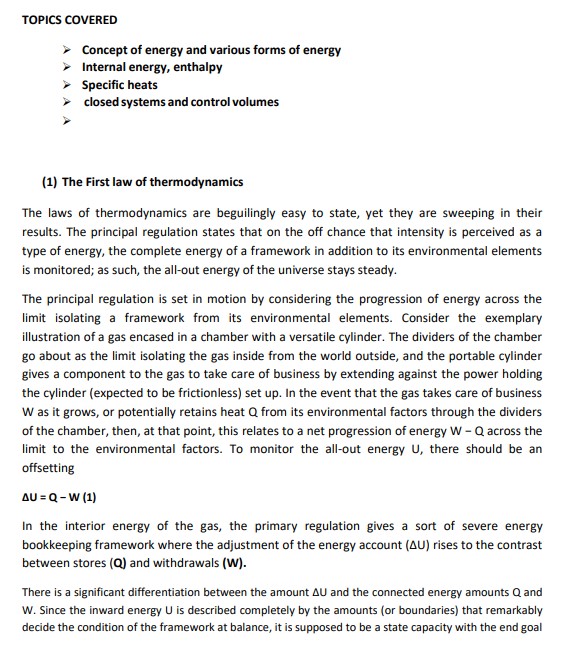First Law of Thermodynamics Summary
Summary:
This unit delves into the principles of the First Law of Thermodynamics. It begins with an exploration of the concept of energy, illustrating the various forms energy can take, such as kinetic, potential, thermal, and chemical energy.
The unit then focuses on the concepts of internal energy and enthalpy. Internal energy is explained as the total energy stored by a system, encompassing kinetic and potential energy at a microscopic scale. Enthalpy, on the other hand, is defined as the total energy of a thermodynamic system, including the internal energy and the product of pressure and volume.
The unit also emphasizes the concept of specific heat, which is defined as the amount of heat per unit mass required to raise the temperature by one degree Celsius. The two types of specific heats – at constant pressure (Cp) and at constant volume (Cv) – are discussed in detail.
Finally, the unit distinguishes between closed systems and control volumes. A closed system is defined as a physical system that doesn’t exchange any matter with its surroundings, although it can exchange energy. Conversely, a control volume is a specified region in space through which mass may flow in or out, and it can also exchange energy with its surroundings. The application of the First Law of Thermodynamics to these systems forms a critical part of this unit’s content.
Excerpt:
First Law of Thermodynamics
TOPICS COVERED
Concept of energy and various forms of energy
Internal energy, enthalpy
Specific heats
closed systems and control volumes
(1) The First law of thermodynamics
The laws of thermodynamics are beguilingly easy to state, yet they are sweeping in their results. The principal regulation states that on the off chance that intensity is perceived as a type of energy, the complete energy of a framework, in addition to its environmental elements, is monitored; as such, the all-out energy of the universe stays steady.
The principal regulation is set in motion by considering the progression of energy across the limit, isolating a framework from its environmental elements. Consider the exemplary illustration of a gas encased in a chamber with a versatile cylinder.


Reviews